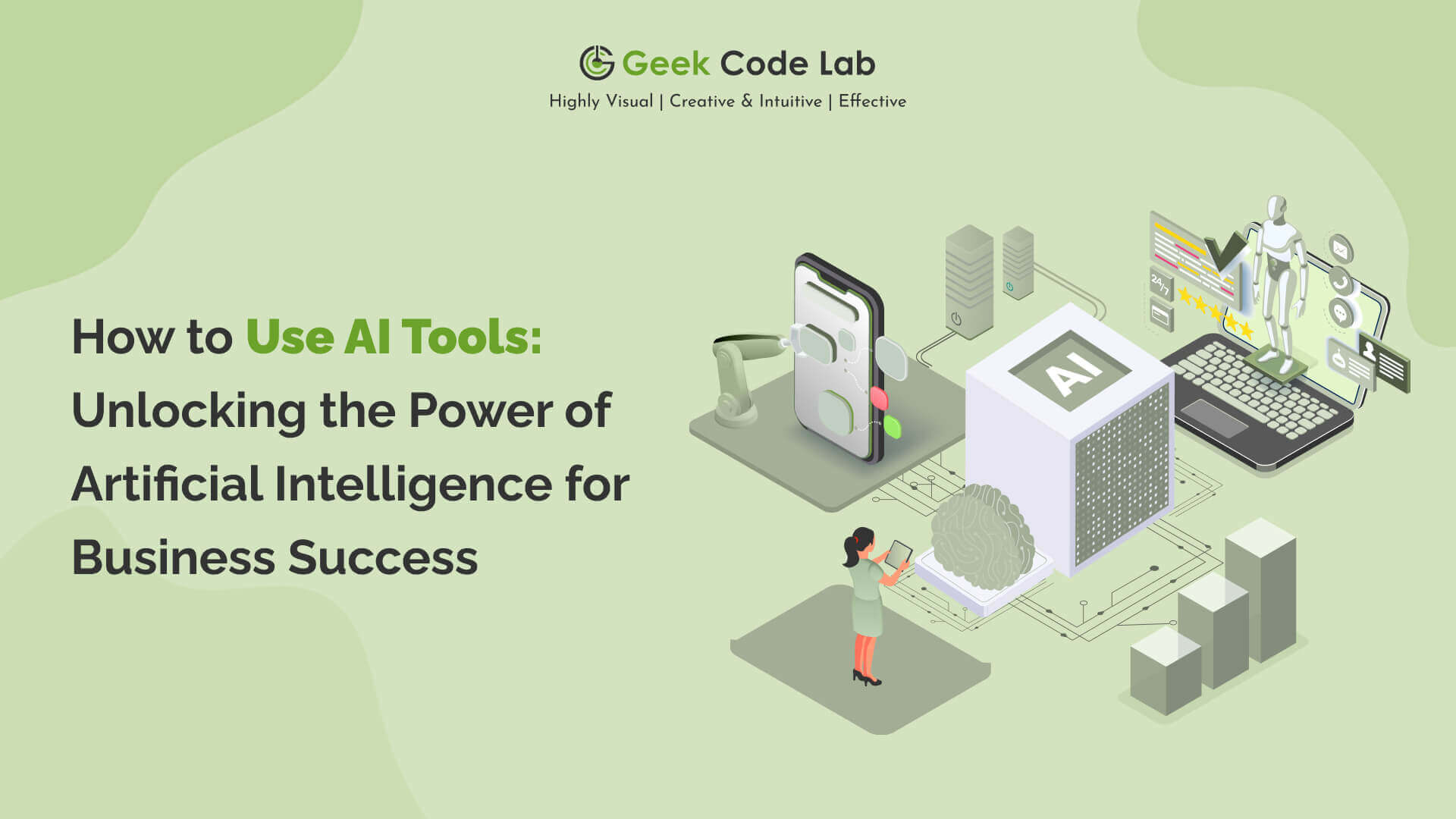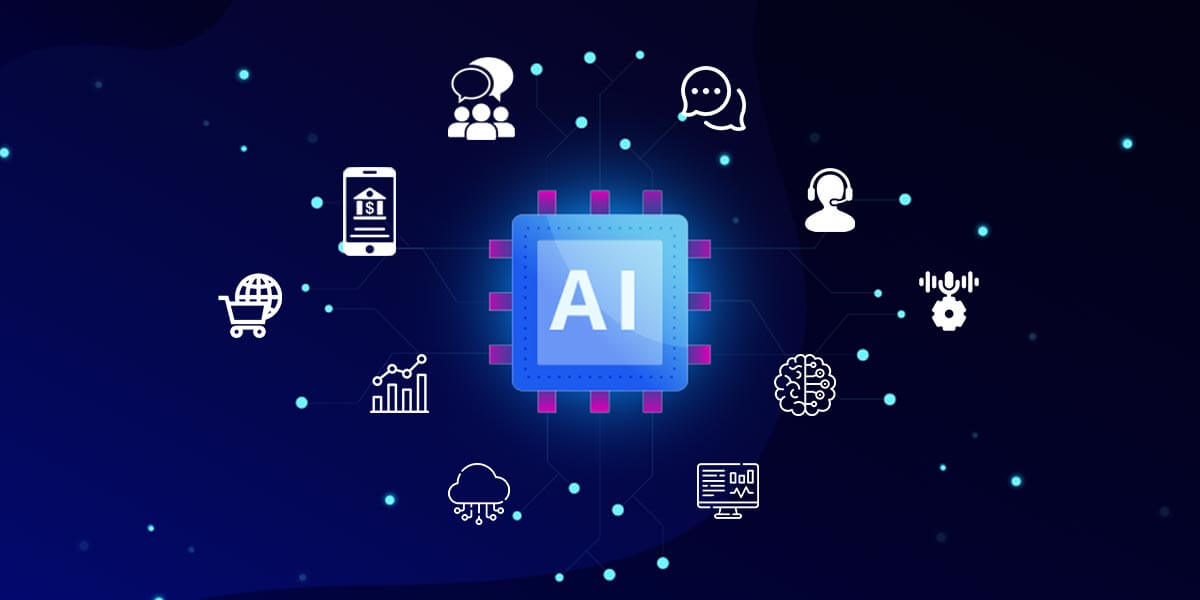What is AI Tools and How to use it?
Artificial Intelligence (AI) tools have revolutionized various industries by automating processes, analyzing data, and enabling personalized experiences. In this article, we will explore the practical aspects of using AI tools, their benefits, popular platforms, implementation strategies, challenges, and future trends.
As AI continues to advance, businesses and individuals are increasingly leveraging AI tools to streamline operations, gain valuable insights, and improve efficiency. This article will guide you on how to effectively use AI tools to maximize their potential and enhance your workflows.
Understanding AI Tools
To effectively utilize AI tools, it is essential to have a clear understanding of their purpose, functionality, and the different types available. Let’s explore the key aspects of understanding AI tools:
1. Definition and Purpose
AI tools are software applications that leverage artificial intelligence techniques to perform specific tasks, simulate human intelligence, and enhance decision-making processes. They are designed to automate processes, analyze data, and solve complex problems efficiently. The purpose of AI tools is to augment human capabilities, improve efficiency, and enable intelligent decision-making across various domains.
2. Types of AI Tools
AI tools encompass a wide range of applications and techniques. Understanding the different types of AI tools can help businesses identify the most relevant ones for their needs. Here are some common types of AI tools:
A. Natural Language Processing (NLP) Tools:
NLP tools enable machines to understand and interpret human language. These tools analyze text and speech to extract meaning, sentiment, and intent. They find applications in language translation, sentiment analysis, chatbots, and voice assistants.
B. Machine Learning Tools:
Machine learning tools enable machines to learn from data and make predictions or decisions without being explicitly programmed. They use statistical models and algorithms to identify patterns, make classifications, and perform regression analysis. Machine learning tools are used in various applications, such as image recognition, predictive analytics, and recommendation systems.
C. Computer Vision Tools:
Computer vision tools enable machines to understand and interpret visual data, such as images and videos. These tools use deep learning algorithms to identify objects, recognize faces, detect patterns, and analyze visual content. They have applications in areas like autonomous vehicles, surveillance systems, and medical imaging.
D. Robotic Process Automation (RPA) Tools:
RPA tools automate repetitive and rule-based tasks using software robots. These tools mimic human interactions with computer systems, performing tasks such as data entry, form filling, and data extraction. RPA tools streamline business processes, reduce human error, and increase operational efficiency.
E. Virtual Assistants and Chatbot Tools:
Virtual assistants and chatbot tools simulate human-like conversation and interaction. These tools use natural language understanding and processing techniques to provide automated support, answer queries, and perform tasks. Virtual assistants and chatbots find applications in customer service, information retrieval, and process automation.
Understanding the different types of AI tools allows businesses to identify the ones that align with their specific needs and objectives. Each type of tool has unique capabilities and applications, making it important to select the right tool based on the desired outcomes.
F. Content Generation and Optimization Tools
Content generation and optimization tools use AI to help businesses create high-quality, SEO-friendly content quickly and efficiently. These tools are especially useful for eCommerce and content-heavy websites, making it easier to scale content production. A strong example of this type of tool is WriteText.ai, an AI-powered content creation solution built for eCommerce platforms. It automates writing tasks such as meta titles, meta descriptions, category and product descriptions, Open Graph text, and image alt texts, enabling users to save time and enhance their SEO performance. As a store’s pages gain authority, WriteText.ai refreshes the content with stronger keywords, keeping everything up to date and optimized without the need for constant manual effort.
Benefits of AI Tools
AI tools offer a wide range of benefits that can have a significant impact on businesses and individuals. Let’s delve deeper into some of these benefits:
1. Automation and Efficiency
One of the primary advantages of AI tools is their ability to automate repetitive tasks, freeing up valuable time and resources. By automating manual processes, businesses can improve efficiency, reduce human error, and allocate their workforce to more strategic and complex activities.
For example, customer service chatbots can handle routine inquiries, allowing human agents to focus on more specialized and critical customer interactions. Automation through AI tools enhances productivity, streamlines operations, and ultimately drives cost savings.
2. Data Analysis and Insights
AI tools excel at processing and analyzing large volumes of data quickly and accurately. Machine learning algorithms can detect patterns, trends, and correlations in data that may be challenging for humans to identify. This enables businesses to gain valuable insights and make data-driven decisions. For instance, AI-powered analytics tools can analyze customer behavior, preferences, and buying patterns, helping businesses optimize marketing campaigns, tailor product offerings, and personalize customer experiences. Data analysis through AI tools empowers businesses to uncover actionable insights, drive innovation, and gain a competitive edge.
3. Personalization and Customization
AI tools enable personalization and customization by understanding individual preferences, behaviors, and needs. Through advanced algorithms, AI tools can analyze user data, such as browsing history, purchase history, and demographic information, to deliver personalized recommendations, offers, and experiences. This level of personalization enhances customer satisfaction, engagement, and loyalty.
For example, e-commerce platforms use AI-based recommendation engines to suggest relevant products based on a user’s browsing and purchase history. Personalization through AI tools fosters stronger customer relationships, increases conversion rates, and drives revenue growth.
4. Enhanced Decision-Making
AI tools provide valuable support in decision-making processes by offering data-driven insights, predictive analytics, and scenario modeling. By analyzing historical data and patterns, AI tools can assist businesses in making informed decisions.
For instance, AI-powered forecasting tools can analyze market trends, consumer behavior, and economic indicators to predict future demand, enabling businesses to optimize inventory levels and production planning. AI tools enable more accurate and timely decision-making, reducing risks, and improving overall business performance.
5. Improved Customer Service
AI tools play a crucial role in enhancing customer service experiences. Chatbots and virtual assistants powered by AI can provide instant responses to customer inquiries, offer 24/7 support, and assist with common queries. This reduces customer wait times, improves response times, and enhances customer satisfaction.
AI-powered sentiment analysis tools can also analyze customer feedback, social media interactions, and online reviews to gauge customer sentiment and identify areas for improvement. By addressing customer needs promptly and effectively, AI tools contribute to stronger customer relationships and brand loyalty.
6. Efficiency in Complex Tasks
AI tools excel in handling complex and intricate tasks that require advanced analysis, pattern recognition, and decision-making. For example, AI-powered image recognition tools can analyze images or videos to detect objects, faces, or emotions. This technology finds applications in various fields, from medical diagnostics to quality control in manufacturing. By automating complex tasks, AI tools increase accuracy, reduce human bias, and enhance operational efficiency.
7. Enhanced Cybersecurity
In an increasingly digital landscape, AI tools have become instrumental in enhancing cybersecurity measures. AI-powered security systems can detect and respond to potential threats, such as identifying anomalies in network traffic or patterns of suspicious behavior. These tools can continuously monitor systems, detect vulnerabilities, and proactively defend against cyberattacks. By leveraging AI in cybersecurity, businesses can safeguard sensitive data, protect intellectual property, and mitigate potential risks.
The benefits of AI tools are vast and diverse, with the potential to transform businesses and improve everyday life. By harnessing the power of AI, organizations can unlock new opportunities, gain competitive advantages, and deliver enhanced experiences to customers.
Popular AI Tools and Platforms
There is a wide array of AI tools and platforms available, each specializing in different AI techniques and applications. Let’s explore some of the popular ones:
1. Natural Language Processing (NLP)
Natural Language Processing (NLP) tools enable machines to understand and interpret human language. These tools analyze text and speech to extract meaning, sentiment, and intent. Some popular NLP tools include:
a. Google’s BERT (Bidirectional Encoder Representations from Transformers):
Google BERT is a powerful NLP model that can understand the context and nuances of words in a sentence, leading to improved language understanding and accurate language generation.
b. OpenAI’s GPT-3 (Generative Pre-trained Transformer 3):
GPT-3 is a state-of-the-art language model that can generate human-like text and perform a variety of language-related tasks, such as text completion, translation, summarization, and more. also check, Chat GPT 3 vs Chat GPT 4 Depth Comparison
2. Machine Learning Platforms
Machine learning platforms provide frameworks, libraries, and tools for building and deploying machine learning models. These platforms facilitate the development of intelligent systems that can learn from data and make predictions. Some popular machine learning platforms include:
a. TensorFlow:
TensorFlow is an open-source machine learning framework developed by Google. It provides a comprehensive ecosystem for building and deploying machine learning models, with support for deep learning, natural language processing, computer vision, and more.
b. PyTorch:
PyTorch is another popular open-source machine learning library that emphasizes ease of use and flexibility. It offers a dynamic computational graph and strong support for neural networks, making it a preferred choice for researchers and practitioners.
c. scikit-learn:
scikit-learn is a Python library that provides a wide range of machine learning algorithms and tools for data preprocessing, model selection, and evaluation. It offers a user-friendly interface and is suitable for both beginners and experienced practitioners.
3 . Chatbots and Virtual Assistants
Chatbots and virtual assistants use AI algorithms to interact with users, answer queries, and perform tasks. These tools simulate human-like conversation and can provide automated support across various platforms. Some popular platforms for creating chatbots and virtual assistants include:
a. IBM Watson Assistant:
IBM Watson Assistant is a comprehensive platform that enables businesses to build and deploy chatbots and virtual assistants. It offers natural language understanding, speech recognition, and integration with other AI services.
b. Dialogflow:
Dialogflow, a Google Cloud service, allows developers to build conversational interfaces for chatbots, voice assistants, and other applications. It provides tools for natural language understanding, intent recognition, and context management.
c. Amazon Lex:
Amazon Lex is a service provided by Amazon Web Services (AWS) that simplifies the development of conversational interfaces. It leverages deep learning techniques to enable natural language understanding and dialog management.
These popular AI tools and platforms empower businesses and developers to leverage AI capabilities in various domains, from language processing to machine learning and chatbot development. Each tool offers unique features and advantages, allowing users to choose the most suitable option for their specific needs and applications.
Also check, List of 5 Exciting AI Tools
Implementing AI Tools in Business
Implementing AI tools in a business setting requires careful planning, evaluation, and execution. Let’s explore the key steps involved in effectively integrating AI tools into your business:
1. Identifying Needs and Objectives
Before implementing AI tools, it’s crucial to identify the specific needs and objectives that these tools can address in your business. Assess areas where automation, data analysis, or personalized experiences can create value and drive growth. For example, you may want to improve customer service efficiency, optimize inventory management, or enhance marketing campaigns through AI-powered analytics.
2. Evaluating and Choosing the Right Tool
Thoroughly research and evaluate different AI tools and platforms available in the market. Consider factors such as functionality, scalability, ease of integration, compatibility with existing systems, and the level of technical expertise required. Depending on your business needs, you might opt for pre-built solutions or custom-developed tools. Choose a tool that aligns with your objectives, fits your budget, and offers a user-friendly interface that suits your team’s capabilities.
3. Integration and Training
Once you have selected an AI tool, focus on integrating it into your existing infrastructure. Collaborate with your IT department or external vendors to ensure smooth integration with your data systems, software applications, and workflows. Additionally, allocate resources for proper training of employees who will be working with the AI tool. Training should include understanding the tool’s functionality, its specific applications, and any necessary technical skills. By providing adequate training, you enable your team to utilize the tool effectively, maximize its potential, and overcome any initial implementation challenges.
4. Testing and Pilot Projects
Before deploying an AI tool across your entire business, consider conducting testing and pilot projects. These initiatives allow you to assess the tool’s performance, identify potential issues, and make necessary adjustments. Start with a small-scale implementation or a specific department to gather feedback and measure the tool’s impact. This iterative approach enables you to fine-tune the tool, optimize its performance, and gather valuable insights before expanding its use.
5. Monitoring and Evaluation
Once the AI tool is implemented, it’s crucial to continuously monitor its performance and evaluate its effectiveness. Track key performance indicators (KPIs) that align with your objectives, such as improved efficiency, cost savings, customer satisfaction, or revenue growth. Regularly review and analyze the data and insights generated by the AI tool to identify areas for improvement or optimization. This ongoing monitoring and evaluation process will help you refine your AI implementation strategy and make informed decisions to drive better business outcomes.
6. Scalability and Growth
As your business evolves, it’s important to consider the scalability of the AI tool. Assess whether the tool can accommodate increasing data volumes, handle more complex tasks, and adapt to changing business requirements. Engage with the AI tool provider or your internal development team to ensure scalability and explore opportunities for further customization or integration with additional tools or systems. Scalability ensures that the AI tool continues to deliver value as your business expands and evolves.
By following these implementation steps, businesses can effectively integrate AI tools into their operations, unlocking the benefits of automation, data analysis, and personalized experiences. AI implementation requires a thoughtful approach, collaboration among various stakeholders, and ongoing evaluation to ensure successful integration and maximum value realization.
Overcoming Challenges and Limitations
While AI tools offer significant benefits, they also come with challenges and limitations that need to be addressed.
1. Data Privacy and Security
AI tools often require access to sensitive data, raising concerns about privacy and security. It is crucial to implement robust data protection measures and comply with relevant regulations to safeguard customer information.
2. Ethical Considerations
As AI becomes more sophisticated, ethical considerations surrounding bias, fairness, and accountability arise. It is essential to implement ethical frameworks and practices to ensure responsible use of AI tools and mitigate potential biases.
3. Maintenance and Updates
AI tools require ongoing maintenance, updates, and monitoring to ensure their optimal performance. Regularly assess the tool’s performance, address any issues or bugs, and stay updated with the latest advancements in the field.
Future Trends in Artificial Intelligence (AI Tools)
AI is a rapidly evolving field, and staying updated on emerging trends is crucial for businesses looking to leverage the full potential of AI tools. Let’s explore some of the future trends that are shaping the landscape of AI tools:
1. Explainable AI
Explainable AI (XAI) is an area of research focused on developing AI systems that can provide transparent and interpretable explanations for their decisions and actions. As AI becomes more pervasive in critical domains such as healthcare, finance, and autonomous vehicles, the need for explainability is paramount. XAI aims to enhance trust, accountability, and ethical considerations by allowing humans to understand the reasoning behind AI-driven decisions.
2. Edge Computing and AI
Edge computing involves processing and analyzing data closer to the source, at the network edge or on the device itself, rather than relying solely on cloud infrastructure. The combination of edge computing and AI enables real-time and low-latency processing of data, making it ideal for applications such as autonomous vehicles, Internet of Things (IoT), and real-time analytics. By leveraging AI at the edge, businesses can achieve faster response times, reduce bandwidth requirements, and enhance privacy and security.
3. Reinforcement Learning
Reinforcement Learning (RL) is an area of machine learning that focuses on training algorithms to make sequential decisions by interacting with an environment and receiving feedback in the form of rewards or penalties. RL has shown promise in solving complex problems in domains such as robotics, game playing, and optimization. As RL algorithms advance, they are likely to find applications in areas such as supply chain management, personalized recommendations, and autonomous decision-making.
4. Federated Learning
Federated Learning is an approach to training machine learning models using decentralized data sources, without the need to transfer raw data to a central server. In federated learning, models are trained locally on user devices, and only aggregated model updates are shared with a central server. This preserves data privacy and security while enabling collaborative learning from distributed datasets. Federated learning holds great potential for applications where data privacy is a concern, such as healthcare, finance, and smart devices.
5. AI in Augmented Reality (AR) and Virtual Reality (VR)
The integration of AI with AR and VR technologies has the potential to revolutionize immersive experiences and user interactions. AI can enhance AR and VR applications by enabling object recognition, spatial understanding, gesture recognition, and natural language processing. This combination can lead to more realistic and intelligent virtual environments, personalized simulations, and immersive training experiences in various industries, including gaming, education, and design.
6. AI-Enhanced Cybersecurity
As cyber threats continue to evolve, AI is becoming increasingly vital in strengthening cybersecurity measures. AI-powered security systems can detect and respond to advanced threats in real-time, adapt to new attack patterns, and identify anomalies in network traffic or user behavior. AI can assist in automating threat detection, analyzing large volumes of security logs, and improving incident response. The future of AI in cybersecurity includes advanced threat hunting, proactive defense mechanisms, and enhanced anomaly detection.
By embracing these future trends, businesses can stay ahead of the curve and unlock new possibilities for innovation and growth. Monitoring and adopting emerging AI tools and technologies can empower organizations to make informed decisions, enhance operational efficiency, and deliver exceptional experiences to their customers.
Conclusion
AI tools have transformed the way businesses operate, offering automation, data analysis, and personalized experiences. By understanding the purpose, benefits, and implementation strategies, businesses can effectively leverage AI tools to drive growth, improve decision-making, and enhance customer experiences.
FAQs
Q1. How can AI tools benefit small businesses?
Ans. AI tools can benefit small businesses by automating tasks, providing valuable insights for decision-making, and enabling personalized experiences that can enhance customer satisfaction and increase operational efficiency.
Q2. Are AI tools limited to specific industries?
Ans. No, AI tools have applications across various industries, including healthcare, finance, marketing, customer service, and more. The versatility of AI allows businesses from different sectors to leverage its benefits.
Q3. Do I need coding skills to use AI tools?
Ans. While coding skills can be advantageous, many AI tools and platforms offer user-friendly interfaces and require minimal coding knowledge. Some platforms provide drag-and-drop functionalities, making it accessible to users with varying technical expertise.
Q4. How do I ensure the ethical use of AI tools?
Ans. To ensure ethical use of AI tools, it’s important to implement transparency, fairness, and accountability. This involves regular audits to identify and mitigate biases, obtaining informed consent for data usage, and adhering to relevant regulations and industry standards.
Q5. Are AI tools only for large enterprises?
Ans. No, AI tools are becoming more accessible and affordable, making them applicable to businesses of all sizes. Many tools offer scalable pricing models and customizable features, allowing small and medium-sized enterprises to leverage the power of AI.





